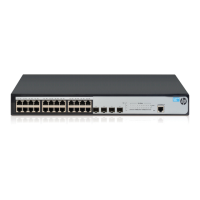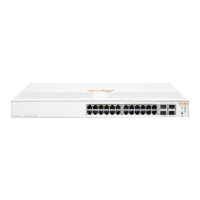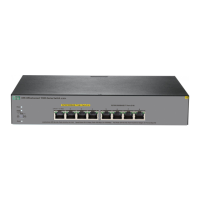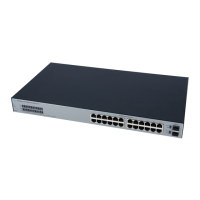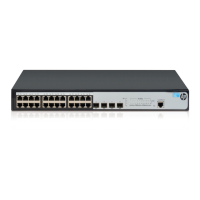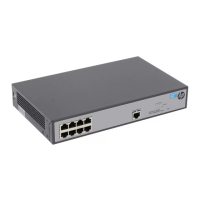Software Revision Allows a terminal device to advertise its software version.
Serial Number Allows a terminal device to advertise its serial number.
Manufacturer Name Allows a terminal device to advertise its vendor name.
Model Name Allows a terminal device to advertise its model name.
Asset ID
Allows a terminal device to advertise its asset ID. The typical case is that the
user specifies the asset ID for the endpoint to facilitate directory management
and asset tracking.
Location Identification
Allows a network device to advertise the appropriate location identifier
information for a terminal device to use in the context of location-based
applications.
NOTE:
For more information about LLDPDU TLVs, see the IEEE standard (LLDP) 802.1AB-2005 and the
LLDP-MED standard (ANSI/TIA-1057).
Management address
The management address of a device is used by the network management system to identify and
manage the device for topology maintenance and network management. The management address is
encapsulated in the management address TLV.
Operating modes of LLDP
LLDP can operate in one of the following modes:
• TxRx mode—A port in this mode can send and receive LLDPDUs.
• Tx mode—A port in this mode can only send LLDPDUs.
• Rx mode—A port in this mode can only receive LLDPDUs.
• Disable mode—A port in this mode cannot send or receive LLDPDUs.
Each time the LLDP operating mode of a port changes, its LLDP protocol state machine re-initializes. To
prevent LLDP from being initialized too frequently at times of frequent operating mode change, an
initialization delay, which is user configurable, is introduced. With this delay mechanism, a port must
wait for the specified interval before it can initialize LLDP after the LLDP operating mode changes.
How LLDP works
Transmitting LLDPDUs
An LLDP-enabled port operating in TxRx mode or Tx mode sends LLDPDUs to its directly connected
devices both periodically and when the local configuration changes. To prevent the network from being
overwhelmed by LLDPDUs at times of frequent local device information change, an interval is introduced
between two successive LLDPDUs.
This interval is shortened to 1 second in either of the following cases:
• A new neighbor is discovered. A new LLDPDU is received carrying device information new to the
local device.

